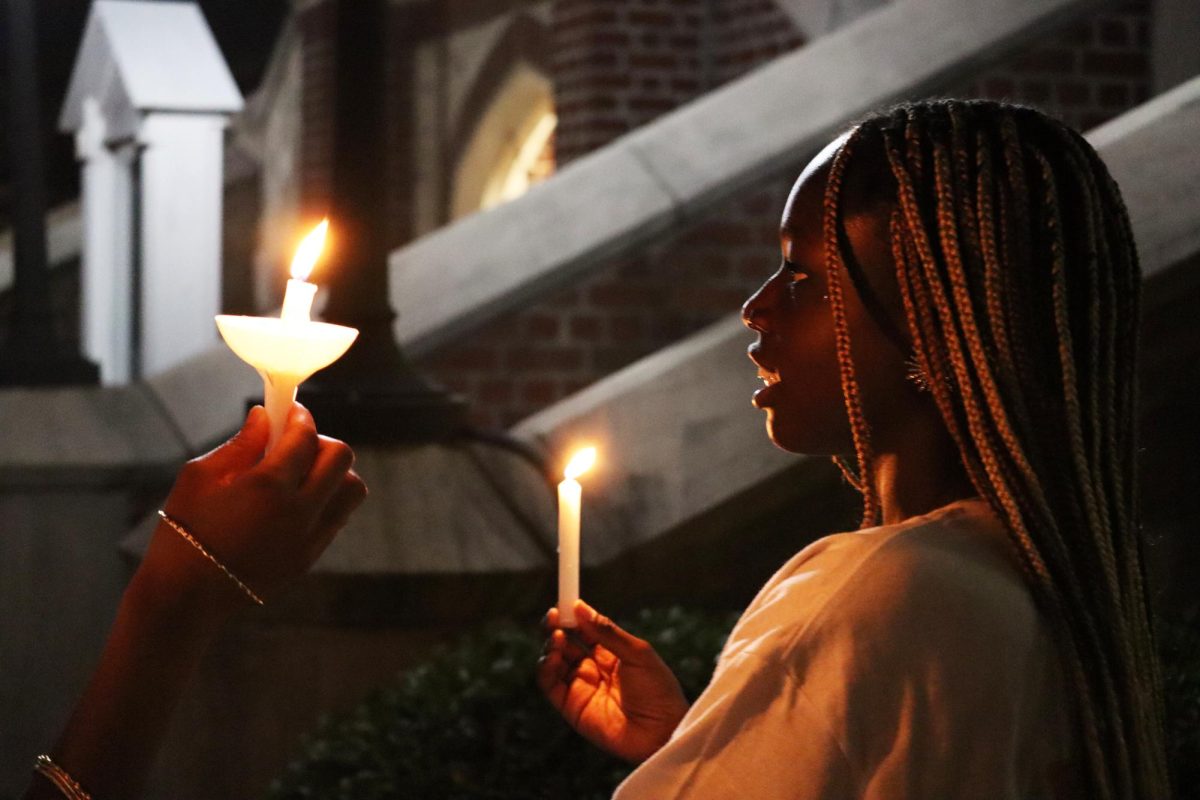In a world of high debt and low revenue, the Loyola administration has managed to hold on to a sturdy and healthy financial position.
According to the Rev. Kevin Wildes, S.J., university president, Loyola enjoys a good bond rating, which is a government evaluation of the university’s credit, a low debt service, which is a principal and interest payments on bonds, and a strong endowment, similar to a savings account for the university – the core principal is deposited and the earnings are distributed or withdrawn.
“We’re playing out of our strengths with the bond rating, the debt service and the endowment,” Wildes said. “We’re in a healthy position, but it can always be improved.”
Loyola’s tuition-dependency is one of the first items on the administration’s list to be fixed.
Loyola has centered around two strategies for lowering tuition-dependency, according to Rhonda Cartwright, vice president of budget and finance. The first strategy is to seek out alternative revenue sources. The university also plans to conduct program reviews of both academic and non-academic programs.
There are three possible ways for Loyola to develop alternative revenue sources: partnership funding, fundraising and facility marketing.
According to Wildes, partnership funding is when “the government says, ‘Hey, that sounds like a good idea. We’d like to be involved in that,’ such as when the government gave [Loyola] $350,000 to build the Boggs Center.”
Thomas Screen, assistant to the president and government relations, will also have a hand in partnership funding.
“The new position, Tommy Screen, can develop funding sources such as philanthropy and government grants and thereby lower our tuition-dependency,” Cartwright said.
Fundraising is another possible alternative revenue source.
“The single best way we can lessen tutition-dependency is fundraising,” Wildes said.
Wildes plans to visit all 20 of the alumni clubs scattered throughout the United States before the end of the semester in an effort to make and maintain contact with potential fundraising donors.
Wildes said marketing out Loyola’s facilities is the third alternative revenue source. Marketing out the facilities includes allowing spaces to be rented out for private use.
Product placement is another possible way to market the facilities, such as allowing Loyola to be shown in a film or TV show.
As for reviewing academic and non-academic programs, Wildes said that no formal plans are in place.
“Basically it’s looking at how we are using our resources and whether we are using them well,” Wildes said.
The program reviews would target programs that are no longer efficient and allocate the money from the inefficient program to a program that is efficient but not adequately financed.
“For example, several years ago, Loyola had a school of pharmacy,” Wildes said. “But it was closed because it wasn’t going to get any better. The whole point is that if you can move resources, you can help out somewhere else.”
According to Cartwright, program reviews could also “produce or identify additional revenue sources.”
Tuition-dependency is a problem for universities because of its dependence on student enrollment.
As of July, tuition comprises 71 percent of Loyola’s operating budget, which goes toward expenses like salaries and benefits, debt service, utilities and insurance.
The other 29 percent derives from auxiliaries, gift and other revenues and income from the unrestricted endowment. Auxiliaries, such as resident hall income and meal plan income, compose 12 percent of the operating budget. Gift revenues, such as the annual fund, and other revenues, such as state aid and grants, account for 3 percent of the operating budget. Income from the unrestricted endowment accounts for the remaining 14 percent.
With a chunk of tuition comprising more than half of Loyola’s operating budget, high student enrollment is a constant concern for the administration.
“Any time you have fewer students than planned, you have less revenue with which to work, which is a problem,” said Deborah Stieffel, dean of admissions and enrollment management.
According to Stieffel, since 2000 when Loyola altered its target number of students to 850, the university has only missed its target once – in 2004.
“In only one year, last year, was the freshman class more than 3 percent fewer students than planned,” she said, referring to the 821 freshman students enrolled in 2004.
Quality and quantity are two important factors, which affect enrollment and, in turn, tuition. A student’s quality is determined by things like high school GPA and ACT or SAT scores. Quantity is simply the amount of students enrolled for a given year.
While the administration desires high quality students, it also needs a high quantity of students because of its dependence on tuition.
“We’ve really already got good quality students,” Wildes said. “It’s unfair though to just find someone who can pay – a rich, dumb kid. It’s unfair to the student and to the teachers, who expect certain standards of students.”
According to Stieffel, the battle between quality and quantity is a common issue for many institutions.
“There is no magic formula for quality versus quantity, and one of these factors does not necessarily completely preclude the other,” Stieffel said. “Careful planning to balance both of these issues is important.”
In addition to targeting Loyola’s tuition-dependency, the administration is also looking at ways to stretch out tuition contributions, which include improving retention rates, increasing the applicant pool and managing financial aid awards.
According to Stieffel, student retention is a common issue for colleges and universities and is usually seen as a measure of a student’s satisfaction with the institution.
“We have the highest five-year graduation rate we have ever had and are above the national rate for four-year private institutions,” Stieffel said. “We are substantially above the national rate for public institutions.”
Stieffel, however, does not take Loyola’s success as an excuse to sit back and relax. “We should always strive to be better,” she said. “Continuous improvement is an important goal for us and retaining students for four years through graduation is part of the equation.”
With only 30 percent of Loyola’s population being natives of Louisiana, the office of admissions is aggressively seeking out more Louisiana students through mail campaigns and predictive modeling.
“I’m told that the number of Louisiana applicants for next year is up,” Wildes said.
The final strategy to improve tuition contributions is the strategic management of financial aid.
“The strategy is to give students what they need in order to come to Loyola, but you also don’t want to throw resources away by giving out more than what they need,” Wildes said.
According to Wildes, about $30 million is spent on scholarships and grants. If the 30 million could be lowered by 1 percent, “we’d have a nice piece of change to go somewhere else that may be on hold because we don’t have the funding.”
Despite the various improvements under way, Wildes said Loyola is in fine financial condition.
“We just want people to know where we are and why we are where we are,” Wildes said. “You can always get better though.”
Sarah Castagnetta can be reached at [email protected].







